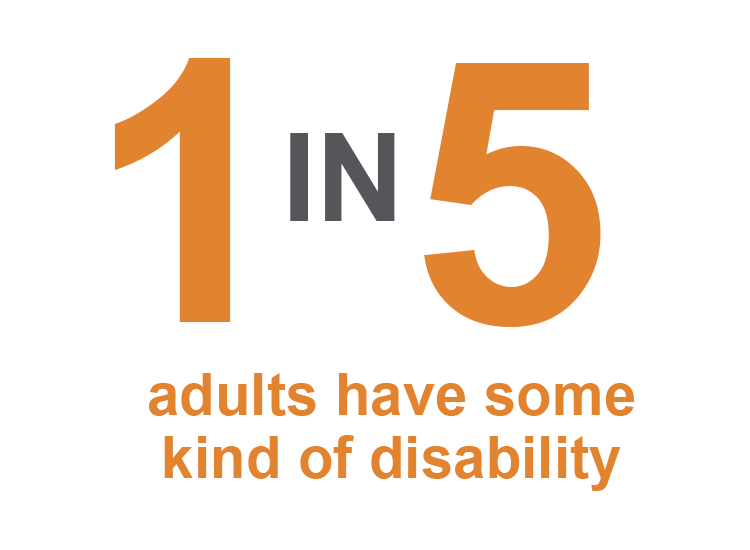Improving Health

Download and print this page [PDF – 899 KB]
Up to 57 million people
are living with a disability in the U.S. today.
Disabilities may include difficulty with movement, hearing, seeing, communicating or concentrating, remembering, or making decisions. CDC’s National Center on Birth Defects and Developmental Disabilities (NCBDDD) works to ensure that people of all abilities are able to live their lives to the fullest.

How NCBDDD makes a difference
Disability and Health
1 in 5 Americans has a disability and they are more likely than people without disabilities to be obese, smoke cigarettes, have high blood pressure, and be physically inactive. NCBDDD improves their health through two national and 19 state-based programs.
Muscular Dystrophy (MD)
NCBDDD improves the care and quality of life for people living with muscular dystrophy by determining how many people have muscular dystrophy, what types of care they receive, and their outcomes based on their care.
Spina Bifida (SB)
1,500 babies are born with spina bifida (serious birth defects of the spine) every year in the United States. The work of NCBDDD helps ensure the quality of care for people with spina bifida throughout their lifetime.
Congenital Heart Defects (CHD)
As medical care and treatment have improved, babies and children with CHDs are living longer and healthier lives. NCBDDD is at the cutting edge of research to understand health challenges these former “miracle babies” are facing as adults.
2017 Successes
-
-
Tracking Muscular Dystrophies
NCBDDD now tracks eight types of muscular dystrophies to address gaps in knowledge about the percentage of people with with each muscular dystrophy type, the chances of survival, the type of care received, and the differences in who receives care. -
Improving Transition of Care for People with Spina Bifida
In collaboration with clinical partners, NCBDDD developed a urological protocol, which minimizes the severity of urological issues and preserves normal kidney function. NCBDDD also advanced skin breakdown prevention guidelines so providers can educate patients and families about this common costly condition among people living with spina bifida. The efforts help people living with spinda bifida be more independent as adults and promote easier transitions from pediatric to adult health care. -
Understanding Congenital Heart Defects (CHD)
We’re gaining a clearer picture of the challenges children with CHD face as they transition to adulthood. Long travel distances might be a barrier contributing to the number of children with a CHD who drop out of needed specialty care. Research showed that compared to urban residents, adolescents with CHD living in the rural areas of one state spent as much as triple the time in traveling to receive health care for their condition. -
Helping People with Intellectual and Developmental Disabilities (IDDs)
Data from seven state disability and health programs across the United States are allowing NCBDDD to better track the health of people with IDDs and how they use healthcare services.
-
Tracking Muscular Dystrophies


Priorities for the future
- Strengthen the evidence for successful public health programs that include and are tailored to the needs of people with disabilities. This will help reduce differences in health outcomes between people with and without disabilities.
- Ensure healthcare providers have the most current scientific information to diagnose, treat, and care for their patients with disabilities.
- Improve transition of healthcare services for people living with genetic disorders, such as spina bifida and muscular dystrophy as they grow older.
- Enhance strategies to improve the lifelong care of individuals with congenital heart defects.
- Increase quality of care and reduce preventable hospitalizations for adults with IDDs.
- Page last reviewed: April 6, 2018
- Page last updated: April 6, 2018
- Content source:


 ShareCompartir
ShareCompartir